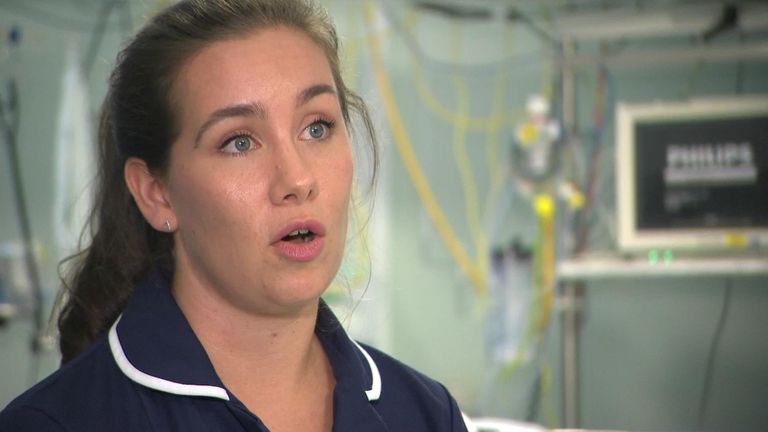Hundreds of lives are being saved every year thanks to a new digital alert system which automatically flags possible cases of sepsis in hospitals, the NHS has said.
The technology uses an algorithm including data from a patient's blood pressure, heart rate and numerous other factors to determine whether sepsis may have developed.
The new "alert and action" computer programme has already been built into digital patient systems at hospitals in Berkshire, Liverpool and Cambridge.
Claire Burnett, clinical nurse specialist at the Royal Berkshire Hospital, helped to develop the technology.
She told Sky News: "Previously we were using a paper screening tool, using the same algorithm but on paper. So because we were already recording our observations, we were already recording our heart rate, blood pressures, temperatures all on a computer we were having to duplicate work.
Advertisement
"That's why these digital systems are really coming into their own because were using information that's already there to produce alerts very, very quickly – almost in real time."
"Fast identification of sepsis and treatment provides much better outcomes for our patients. so we know if we identify sepsis quickly and we treat it really quickly our patients will have much better outcomes," she added.
More from Nhs

Sepsis, also known as blood poisoning, occurs when the body's response to an infection causes it to attack its own tissues and organs and can cause widespread inflammation.
Every year it is estimated there are 250,000 cases of sepsis in England, with at least 40,000 deaths.
Dr Simon Eccles, chief clinical information officer at NHSX, the body which works to integrate new digital technology into the NHS, said: "The challenge for us is how to spot it early enough to really make a difference with treatment, and that's where this technology, these algorithms come in.
"To spot subtle deterioration that clinicians might have otherwise found in a busy environment they just wouldn't find as early as they could.
"The algorithm draws it to their aRead More – Source
[contf] [contfnew] 
Sky News
[contfnewc] [contfnewc]






